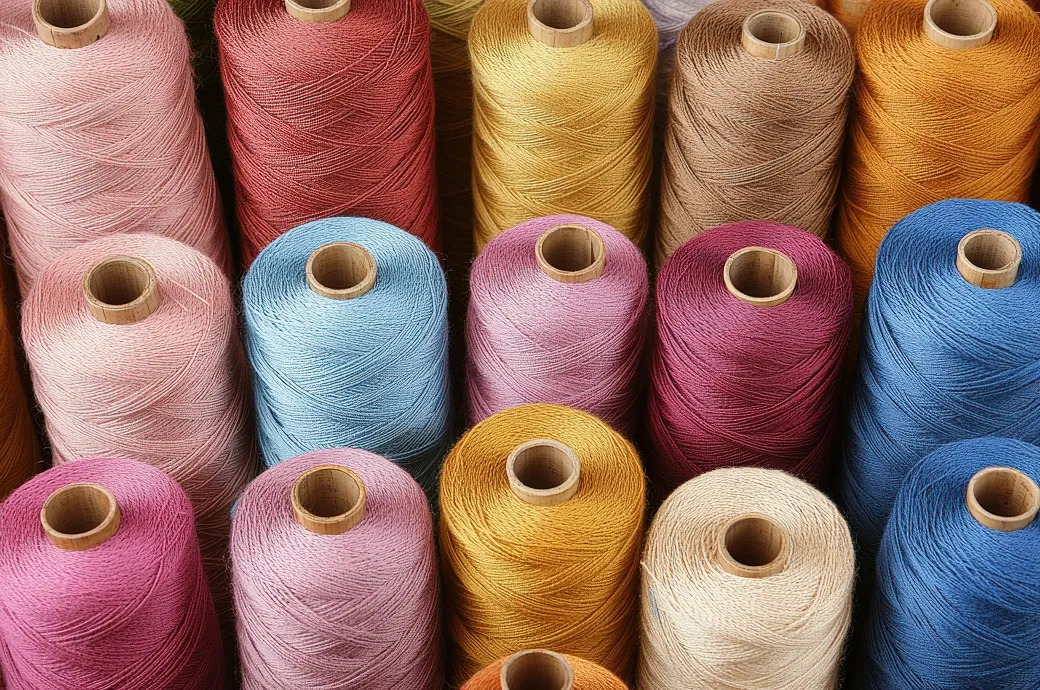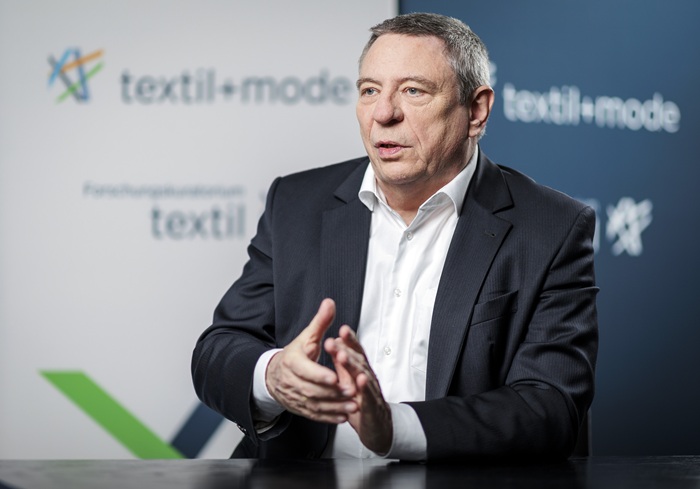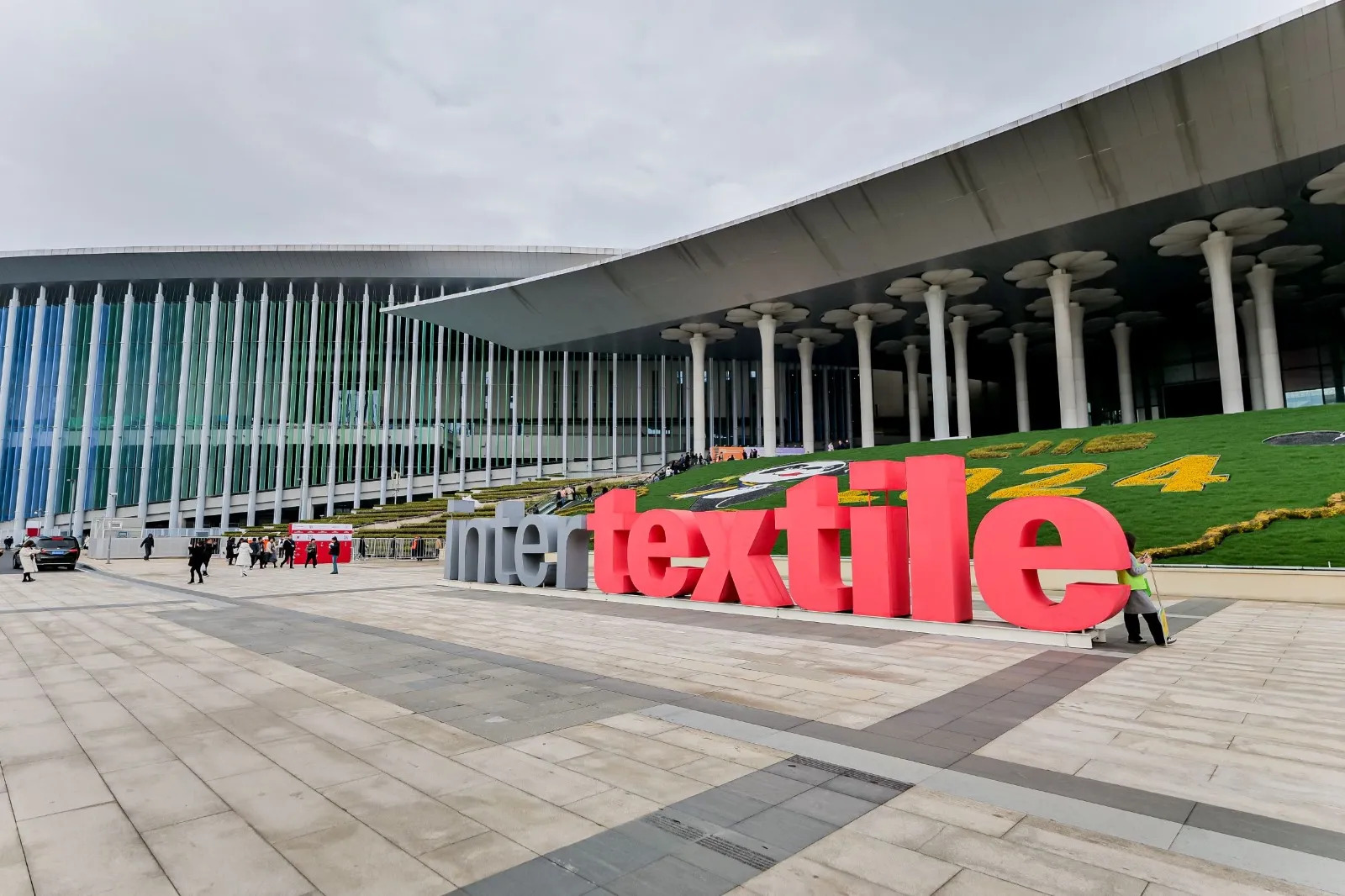FW
The American Apparel & Footwear Association announced the transition of its Board of Directors, as well as the addition of 15 newly elected and re-elected Board members. The officer induction ceremony took place at the conclusion of the AAFA Executive Summit in Washington, D.C. The following were confirmed as AAFA's Board of Directors leadership for the 2018-2019 term: Chairman: Thomas Glaser, VP, VF Corporation & President – Global Supply Chain; Vice-Chairman: Gary Simmons, President and CEO, Gerber Childrenswear, LLC; Treasurer: Kurt Cavano, President, Infor GT Nexus Commerce Network; Secretary: Colin Browne, Chief Supply Chain Officer, Under Armour, Inc.
The following were elected and re-elected as members of the Board: Halide Alagoz, Ralph Lauren; Lisa Bate, Bureau Veritas Consumer Products; Robert Campbell, BBC International; Kurt Cavano, Infor GT Nexus Commerce Network; Ted Dagnese, Lululemon; Bill Ells, Vibram USA; Mike Fralix, Textile/Clothing Technology Corp.; Leslie Gallin, UBM/FN Platform; Katherine Gold, Goldbug; Sidney Howard, Coats, Todd Kahn, Tapestry; Steve Mostofsky, TTI Global Resources; David Miller, Minnetonka Moccasin Company, Inc.; Frank Sauceda, Luen Thai International; Timothy Scobie, Mason Companies, Inc.; Sarah Clarke of PVH Corp. was approved to fill a seat vacated by a colleague for the remainder of the 2017-2018 term.
Paula Zusi of Advent International Corporation who steps down as chairman post conclusion of her one-year term said, “Through the collective efforts of my fellow board members and the AAFA staff, we’ve made strides beyond what any of us could have imagined. As I pass on the gavel, I feel that I have positioned the association and my successor Tom Glaser to continue to provide exceptional support for our growing association membership in the year ahead.”
On his part, Tom Glaser, Chairman, American Apparel & Footwear Association said, “AAFA provides the industry with indispensable value as we pave the way to bring new product to market around the world. Having worked directly with the team at AAFA for many years, I can say that their advice and support has played a crucial advisory and advocacy role throughout my career. This is an exciting time of transition for our industry, and I am excited to lead this organisation for the year ahead.”
Growing consumer awareness on eco clothing is forcing companies to take the sustainable route. The proof is the various initiatives taken up by associations and companies such as Fashion Positive, a part of the Cradle to Cradle Products Innovation Institute, and the H&M Foundation, through its Global Change Award that honors apparel innovation in the areas of waste, digitisation and climate positive advancements, have nurtured a burgeoning interest in conscious design that considers all aspects of apparel’s impact while investigating new ways to create clothing from alternative materials.
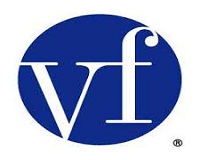
Growing consumer awareness on eco clothing is forcing companies to take the sustainable route. The proof is the various initiatives taken up by associations and companies such as Fashion Positive, a part of the Cradle to Cradle Products Innovation Institute, and the H&M Foundation, through its Global Change Award that honors apparel innovation in the areas of waste, digitisation and climate positive advancements, have nurtured a burgeoning interest in conscious design that considers all aspects of apparel’s impact while investigating new ways to create clothing from alternative materials.
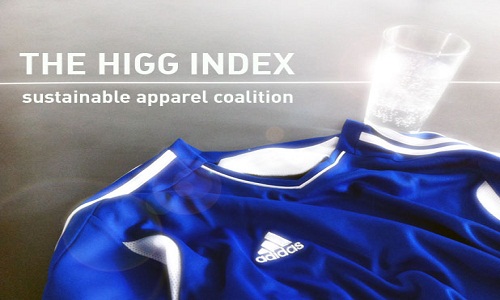
Meanwhile, Eileen Fisher, Gap, Guess, Levi Strauss, Nike and VF Corporation also signed the Science Based Targets. The effort is to establish emission reduction targets consistent with global efforts to limit warming to well below 2 degrees Celsius. Moreover, the Sustainable Apparel Coalition has attracted numerous high-profile apparel retailers, including Target, with its Higg Index that empowers companies to measure their sustainability performance. The coalition launched the Apparel Impact Institute, which made its first project focussing on improving the impact of textile mills in partnership with the Natural Resources Defense Council’s Clean by Design program.
Taking cue, VF Corp., denim producer Orta Anadolu and Danish mattress and bedding company Auping, have now tied up with Circle Economy to develop a tool to help fashion companies reduce their environmental footprint and build more sustainable business models. The effort is supported by C&A Foundation, which focuses on building a more sustainable cotton production model, improving on-the-job conditions for garment workers, strengthening communities where garment factories are located, and eradicating slavery and child labour from apparel supply chains.
Positive aspects
This digital resource will guide fashion brands as they consider a garment’s end-of-life options, cradle-to-cradle means of reducing textile waste, and the methodology to compare the practical, economic and environmental impact of each of its options. It will provide insights into a brand’s waste levels and help to set appropriate benchmarks, so it can measure its achievements over time. The Circle Fashion Tool can also connect brands to industry partners that will help them transform ideas into action.
Anna Maria Rugarli, Senior Director, sustainability and responsibility, VF Corp.’s EMEA region points out VF believes in the linear system of production, as it works today, is not sustainable for a planet with a growing population and limited resources. For this reason, they are exploring new Circular Business Models to build better products, extend product life, transform transactions into deeper relationships, and turn waste into value. For example, the US alone generates 15 million tons of textile waste, which has doubled annually over the past 20 years. Orta Anadolu also feels collaborations and partnerships generate transformational outcomes and this tool will create a platform for the type of circular solutions that the industry is searching for.
New technologies
In another initiative, Circle Economy reported its Fibersort technology, which auto-sorts large batches of mixed post-consumer textiles based on fibre composition, has officially started. It will reduce the need for sourcing virgin materials by creating more viable fabrics from textile-to-textile recycling. Cyndi Rhoades, CEO of closed-loop textile recycling and design company Worn Again, says the Fibersort will enable suppliers of post-consumer textiles to meet the feedstock specification for its process more efficiently. This innovation will help provide advanced sorting capabilities for the new generation of textile to textile recycling technologies and help the industry on its way to circularity.
Maharashtra's textile policy offers a primary capital subsidy of 25 to 40 per cent across the value chain. There are area-wise and sector-specific incentives, such as 10 per cent of additional subsidy and lower electricity rates for setting up units across under-developed regions.
The state produces 8.2 million bales of cotton, of which only a fourth is consumed within the state. It wants the remaining three-fourth of unprocessed cotton to be processed within the state, for which it has offered an electricity rate lower by Rs 3 a unit. Tamil Nadu produces only 0.5 million bales of cotton but processes around 10.5 million bales by procuring the fiber from other states because of cheaper electricity.
Maharashtra has also offered incentives for pollution-free and eco-friendly dyeing and processing plants. There are incentives to make non-conventional yarn like bamboo, banana, ghaypat, ambadi, coir and maize. By these measures Maharashtra is confident of attracting massive investment in the textile sector.
However, for garment units, cost of production and viability remain a major concern. With wage incentives, the cost of production declines. There is no mention of this in the policy. Hence, garmenting units would find Gujarat Andhra, Telangana or Jharkhand preferred destinations. They offer wage incentives for new textile units.
A path-breaking report issued recently from ClimateWorks Foundation and Quantis promotes reducing apparel’s environmental impact. The fashion industry is estimated to contribute 8 per cent of the world’s greenhouse gas emissions. Just short of the contribution of the entire global transportation sector! (14 per cent, as per IPCC.)
Globalization has seen manufacturing moving to countries without strong environmental controls, population growth, rapid increase in GDP (and hence purchasing power) around the world, and, most notably, fast fashion trends (that rapidly multiplied the amount of clothing people buy per capita)—and the sum of these trends has increased this sector’s climate impact by 25 per cent in just over a decade. And the sector is projected to further sharply increase its climate impact by nearly half as much again by 2030.
The ClimateWorks/Quantis report also provides some uniquely helpful information to craft a path forward for the serious reductions we need. By diving deeper into each phase of apparel manufacturing than previous analysis, this study identifies the specific hot spots in the manufacturing process which need the most attention. In a nutshell, it directs the industry’s focus to the areas that matter the most, so that companies don’t waste time on the small stuff.
The biggest hot spot of concern in the global fashion industry is fabric dyeing and finishing, weighing in at 36 per cent of the sector’s total carbon footprint. And NRDC’s Clean by Design program has focused for more than five years.
There are many opportunities to significantly reduce climate, water and chemical use in this phase of apparel manufacturing with fixes that will save you money. We’re also here to tell you that despite the stellar and well-documented results of Clean by Design at more than 100 fabric mills around the world, participation in the program is nowhere near what it should be. “Rise up,” we have been saying to multi-national apparel retailers and brands, without enough response.
The cut-and-sew garment factories weighing in at a marginal 7 per cent. NRDC has just launched an effort to create model SBT’s for the fashion industry. For more info. stay tuned.
Mauritius may have a reputation as a tropical paradise, but for thousands of migrants working in its factories, it represents a limbo of debt and bonded labor. Many arrive from Bangladesh, attracted by the promise of a decent job so that they can send money home to their families. But the reality is that they end up trapped for months, even years, working to repay the huge fees charged by unscrupulous recruitment agents just to secure their job abroad.
Now Mauritius and Bangladesh are negotiating an agreement that should help to put an end to this kind of practice once and for all. These efforts are starting to bear fruit. A number of suppliers in Mauritius have already changed their recruitment policies and practices. In some cases, debts owed by migrant workers have been repaid to free them from bonded labor.
The apparel and textile industry is big business for Mauritius, but it is heavily reliant on migrant workers, the majority coming from Bangladesh, with others from Madagascar, India and Sri Lanka. This reliance on migrant labor without due oversight of the recruitment process has made it a high-risk country for modern slavery. Mauritian trade unions are starting to build alliances with Bangladesh unions so that workers can better understand their rights before they leave.
IIT Expo was held in Sri Lanka, February 21 to 23, 2018. Exhibitors from various textile clusters of India--Tamil Nadu, Mumbai, Surat, Rajasthan--displayed apparel fabrics, made-ups, home textiles in various blends, textures, colors, designs.
The event was useful for importers, dealers, wholesalers of various textiles, sourcing agencies, retailers/buying houses, institutional buyers, yarn traders and garment manufacturers of Sri Lanka to directly interact with exhibitors from India and to choose their requirements. Different varieties in fiber composition, weave, shades were available under one roof.
Sri Lanka is a garment making hub. A scenario where Sri Lanka sources from India and manufactures apparel and garments for the rest of the world could lead to a win-win situation for both countries. Both countries share a rich textile tradition. Large Indian companies can encourage Sri Lankan companies to be part of their supply and value chains.
Sri Lanka has been urged to make use of fully-funded training opportunities in India under the Indian Technical and Economic Cooperation program, in which a number of slots is earmarked for textile related subjects. Sri Lanka is one of India’s largest trading partners in SAARC. India in turn is one of Sri Lanka’s largest trade partners globally. Sri Lanka is among the top ten countries which import cotton fabrics from India.
Kerala is supposed to be the most brand aware state in India for intimate wear following this insight, Intimasia is set to hold its largest trade show in Kochi from 8-10 March, 2018. The intimate apparel industry, despite being the fastest growing sector of the textile and apparel industry in India, has been an almost closeted industry. Correspondingly this lack of visibility has been a setback for the industry which is lagging behind its global counterparts almost by a decade.
It will be a gala event as more than 70 intimate wear brands from all over the country will participate and exhibit their designs and products. Most Keralites prefer wearing branded intimate wear. But the current 2500+ Multi Brand Outlets (MBOs) are not enough to meet existing demand. The intimate apparel market in Kerala is mostly occupied by local brands. So, all the popular pan-Indian brands will be coming to INTIMASIA with the hopes of exploring this market and expanding their businesses to the state. Kerala has been ranked second by the World Bank in the Investment Climate Index among all states of India. The ranking speaks volumes about Kerala being one of the best places to set up a business.
Yusuf Dohadwala, CEO, Intimate Apparel Association of India and one of the most influential thought leaders in the industry, says, " Intimasia will be the largest intimate apparel trade event in India. It's only apt that we host the event in Kerala where the intimate apparel industry is projected to have an annual turnover of INR 5000 crores." Yusuf predicts that lingerie retail in India is slated for a revolution that will be kick started at this expo with the proliferation of brands entering the highly rewarding Kerala Market. The expo is also a first of its kind platform for networking.
At the International Cotton Conference in Bremen to be held on March 21, 2018, session IV Textile Processing will be dedicated to this subject. Michael Tuschak, Mayer & Cie., Germany, informs about the 3-in-1 concept of Spinitsystems. Spinning, cleaning and knitting are all combined in one machine. This enables the production process of high-quality single jersey knitwear to be shortened significantly, which saves energy costs and reduces CO2 emissions.
An old dye returns to glory.. Dean Etheridge of Texas Tech University, USA, talks about a new, innovative indigo dyeing process for cotton yarns using foam. This saves large amounts of water and is now increasingly being used by major brands in jeans production. Amin Leder, Trützschler GmbH & Co. KG, Germany, presents a technique where the stretching process for rotor yarn production does not take place in a separate machine, but is integrated into the carding. This makes it possible to efficiently process even cotton with a higher waste content.
Harald Schwippel, from Rieter, Switzerland, will discuss all four major spinning technologies for cotton – ring spinning, compact spinning, rotor spinning and air-jet spinning. His talk provides an overview of the possibilities that each of these processes currently offers for the manufacture of different yarns and the most efficient options for different applications.
In the run-up to the International Cotton Conference, the Fibre Institute Bremen and the Cotton Exchange are organising a specific seminar for spinning mills on Tuesday, dealing with the efficient handling of contaminants in cotton, from elimination in production to removal in winding. Expert Session IX deals with the exchange of the latest research results, e.g. in the field of ginning in relation to cotton quality, or the important issue of checking the traceability of GMO-free cotton.
With apparel from Bangladesh made from fabric sourced out of China flooding the Indian market, the textile industry wants the commerce ministry to fine tune South Asia Free Trade Area (SAFTAs) rules of origin to make it mandatory for Bangladesh to use yarn and fabric produced in India in its garments to claim duty and quota-free exports. Even as textile exports from India continue to drop, there has been a surge in imports of textile products, post GST.
Data released by the Export Promotion Bureau of Bangladesh says India’s imports of garments from Bangladesh rose by 66 per cent year-on-year (y-o-y) to $111.3 million during July-December 2017, while knitted apparel imports from Bangladesh spiralled upward by 77 per cent y-o-y to $36.5 million between July and December 2017, woven apparel imports went up by 62 per cent y-o-y to $74.8 million.
Prabhu Dhamodharan, convenor, Indian Texpreneurs’ Federation (ITF) asserts, Tweaking SAFTA rules of origin to make the use of yarn and fabrics of Indian origin mandatory for allowing duty-free, quota-free market access will prevent China from taking undue advantage of a facility that is meant for poor, least developed countries (LDCs). At the same time, it will give a boost to India’s export of yarn and fabrics to Bangladesh and other LDCs, which at present are being supplied by China. India will not be the first country to impose such sourcing restrictions for allowing duty-free import of apparel. The US has imposed sourcing restriction under North American Free Trade Agreement (NAFTA) for accepting duty-free import of garments from Mexico and other NAFTA members. India permitted duty free import of readymade garments from Bangladesh under SAFTA in 2006. Earlier, this facility was limited to 8 million pieces per annum. This restriction was removed in 2010 which correspondingly resulted in imports from Bangladesh rising consistently.
Bangladesh imports Chinese fabric, converts them into garments using its cheap labour and exports them to India without paying any duties.Thus, this unilateral duty free market access given to Bangladesh is actually facilitating backdoor entry of Chinese textiles into India.
Denim ‘fur’— not the real fur — is the latest fashion trend to be seen on catwalks. Fashion designer Tiziano Guardini in a joint venture with ISKO Creative Room is set to create the material, which has been manufactured using certified organic cotton and pre-consumer recycled cotton. The denim ‘fur’ doesn’t look like real fur, ISKO — the world’s largest producer of denim — is of the view that this new material can be used to enhance the look of apparel in the same way that real fur does. Fabio Di Liberto, brand director of ISKO, was reported to have said, “We believe that denim ‘fur’ can be a responsible, fun, hype and cruelty-free alternative to animal fur. Sustainability is a difficult concept, dynamic and multidimensional.
ISKO is working with its partners to raise awareness and to change the way people think about denim, within the industry but also with consumers.People on social media are all for the new cruelty-free material.
"I am so in love with the denim 'fur'. So creative and effective," someone posted on Instagram and shared by ISKO. Others say the designs are "very beautiful" and "wonderful".
Tiziano Guardini who is a strong believer in using sustainable materials explains, "I've always wanted to create fur alternatives and have in the past trialled a number of different looks - my first creation was made from pine needles! Western countries do not need to use animal furs but some fashion houses continue to do so. I'm hoping that by creating a sustainable alternative such as denim fur we will be able to show people that fur alternatives are just as beautiful and aesthetically pleasing as the real thing."


